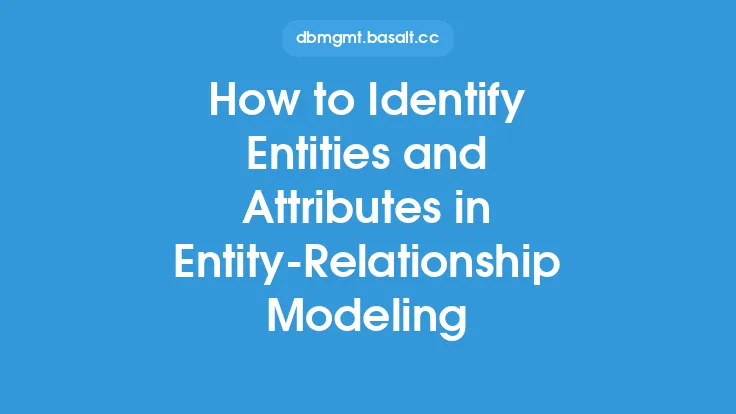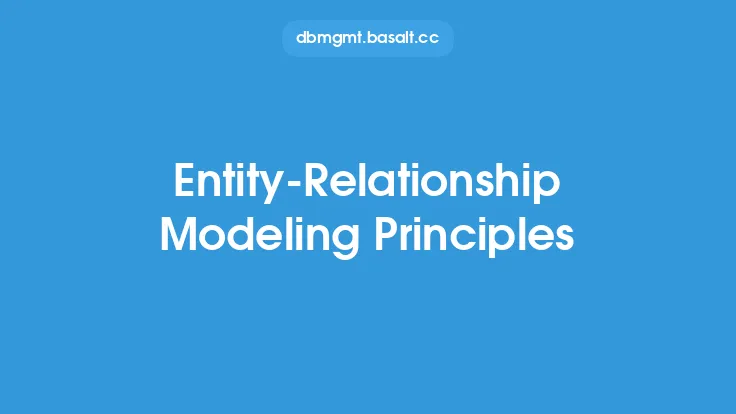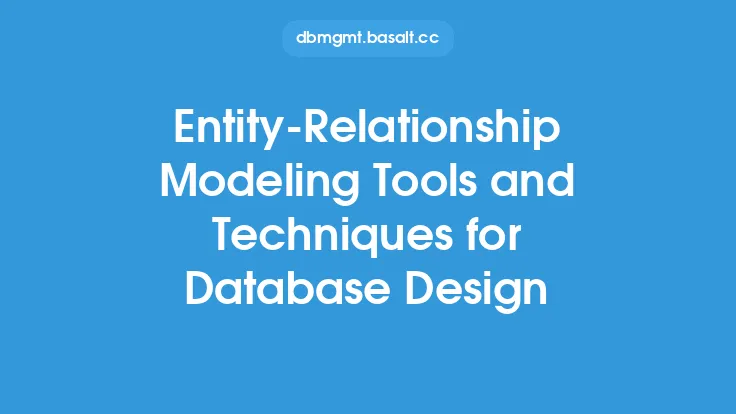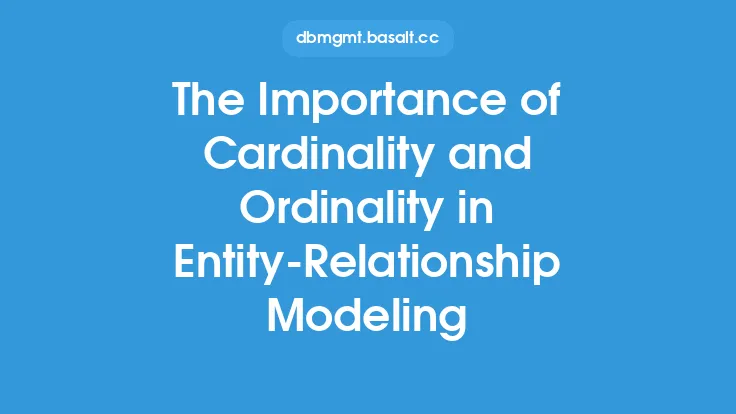When designing a database, entity-relationship modeling is a crucial step that helps to create a conceptual representation of the data and its relationships. However, there are several common mistakes that can be made during this process, which can lead to a poorly designed database that is difficult to maintain and scale. In this article, we will discuss some of the most common mistakes to avoid in entity-relationship modeling, and provide guidance on how to create a robust and effective model.
Introduction to Entity-Relationship Modeling Mistakes
Entity-relationship modeling is a complex process that requires a deep understanding of the data and its relationships. One of the most common mistakes made during this process is failing to identify all the relevant entities and attributes. This can lead to a model that is incomplete or inaccurate, which can have serious consequences for the database and the applications that rely on it. To avoid this mistake, it is essential to take the time to thoroughly analyze the data and its relationships, and to identify all the relevant entities and attributes.
Incorrect Entity Identification
Incorrect entity identification is another common mistake made during entity-relationship modeling. This can occur when an entity is incorrectly identified as a single entity, when in fact it is a collection of related entities. For example, a customer entity may be incorrectly identified as a single entity, when in fact it is a collection of related entities such as customer name, address, and contact information. To avoid this mistake, it is essential to carefully analyze the data and its relationships, and to identify each entity and its attributes correctly.
Insufficient Attribute Identification
Insufficient attribute identification is another common mistake made during entity-relationship modeling. This can occur when not all the relevant attributes are identified for an entity, which can lead to a model that is incomplete or inaccurate. For example, a customer entity may have attributes such as customer name, address, and contact information, but may not have attributes such as order history or payment information. To avoid this mistake, it is essential to take the time to thoroughly analyze the data and its relationships, and to identify all the relevant attributes for each entity.
Incorrect Relationship Identification
Incorrect relationship identification is another common mistake made during entity-relationship modeling. This can occur when the relationships between entities are incorrectly identified, which can lead to a model that is incomplete or inaccurate. For example, a customer entity may have a one-to-one relationship with an order entity, when in fact it has a one-to-many relationship. To avoid this mistake, it is essential to carefully analyze the data and its relationships, and to identify each relationship correctly.
Failure to Consider Cardinality and Ordinality
Failure to consider cardinality and ordinality is another common mistake made during entity-relationship modeling. Cardinality refers to the number of relationships between entities, while ordinality refers to the order of the relationships. For example, a customer entity may have a one-to-many relationship with an order entity, but the ordinality of the relationship may not be considered. To avoid this mistake, it is essential to carefully analyze the data and its relationships, and to consider both cardinality and ordinality when designing the model.
Inconsistent Naming Conventions
Inconsistent naming conventions are another common mistake made during entity-relationship modeling. This can occur when the naming conventions used for entities and attributes are not consistent, which can lead to confusion and errors. For example, an entity may be named "customer" in one part of the model, but "client" in another part. To avoid this mistake, it is essential to establish consistent naming conventions and to use them throughout the model.
Failure to Consider Data Integrity
Failure to consider data integrity is another common mistake made during entity-relationship modeling. Data integrity refers to the accuracy and consistency of the data, and is essential for ensuring that the database is reliable and trustworthy. For example, a customer entity may have an attribute for customer name, but the model may not consider the data integrity rules for ensuring that the customer name is accurate and consistent. To avoid this mistake, it is essential to carefully analyze the data and its relationships, and to consider data integrity rules when designing the model.
Inadequate Documentation
Inadequate documentation is another common mistake made during entity-relationship modeling. This can occur when the model is not properly documented, which can lead to confusion and errors. For example, the model may not include documentation of the entities, attributes, and relationships, which can make it difficult to understand and maintain. To avoid this mistake, it is essential to establish a thorough documentation process and to use it throughout the modeling process.
Conclusion
Entity-relationship modeling is a complex process that requires careful analysis and attention to detail. By avoiding common mistakes such as incorrect entity identification, insufficient attribute identification, incorrect relationship identification, failure to consider cardinality and ordinality, inconsistent naming conventions, failure to consider data integrity, and inadequate documentation, you can create a robust and effective model that meets the needs of your database and applications. Remember to take the time to thoroughly analyze the data and its relationships, and to establish consistent naming conventions and documentation processes. With careful planning and attention to detail, you can create a high-quality entity-relationship model that will serve as a solid foundation for your database design.





